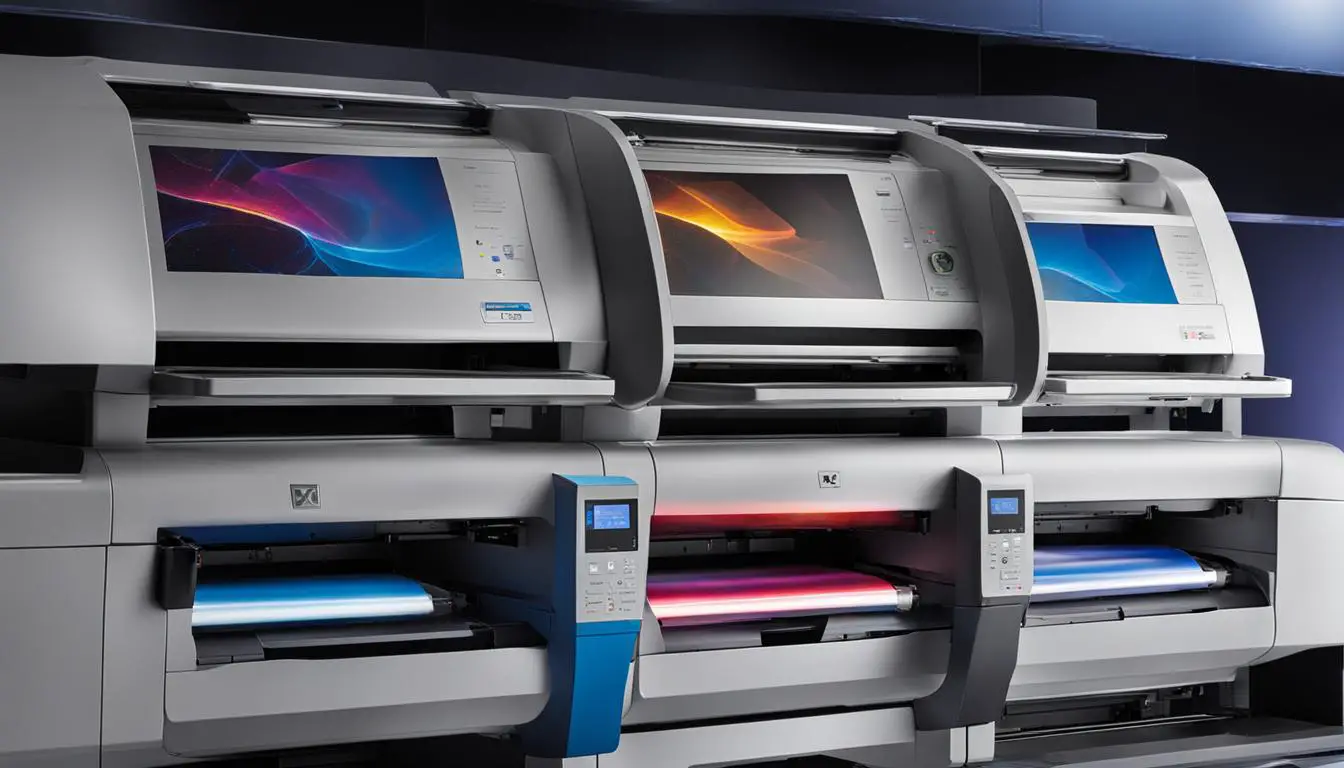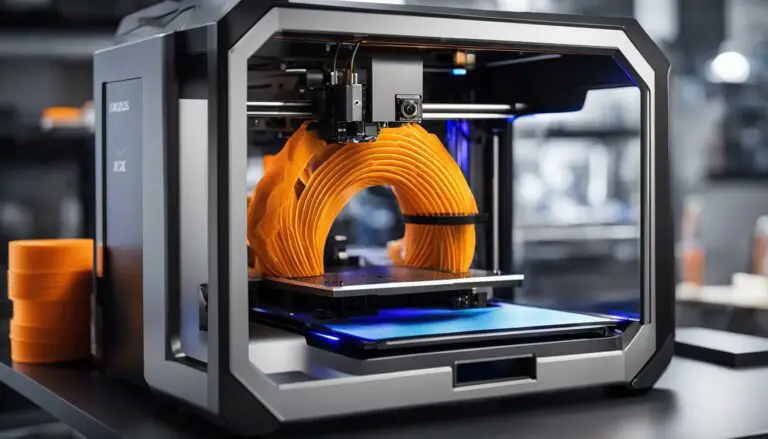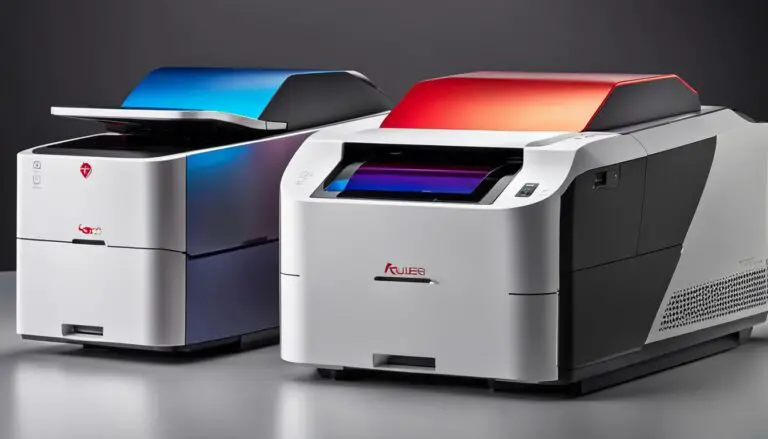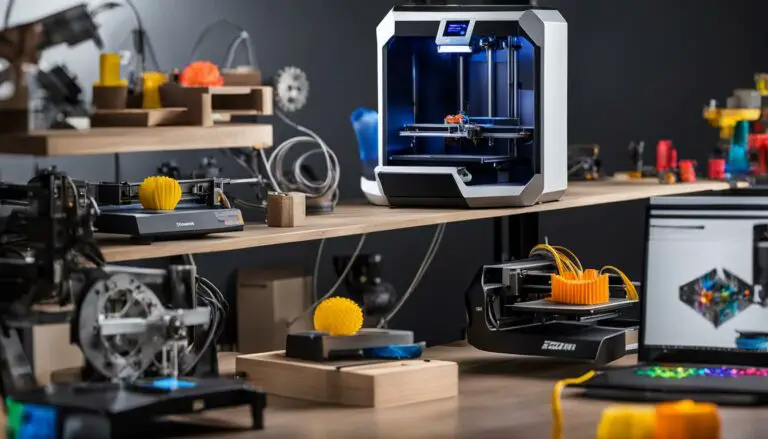LED Printers vs Laser: Learn the Difference
Originally posted on November 17, 2023 @ 1:34 pm
Welcome to our informative guide comparing LED printers versus laser printers! If you’re currently in the market for a new printer, you have likely encountered these two popular options. While both LED printers and laser printers are reliable and efficient choices, it is important to note their unique differences that may affect your printing needs. In this article, we will examine the main benefits of LED printers and laser printers, aiding you in making a well-informed decision that aligns with your specific requirements.
Key Takeaways:
- LED printers use a stationary array of LEDs, while laser printers use a laser beam.
- LED printers are faster, cheaper, and more reliable due to simplified mechanical parts and solid-state light source.
- Laser printers offer higher resolution and image quality, making them ideal for artists and photographers.
- Consider your specific printing needs and preferences when choosing between LED and laser printers.
Inkjet Printers: Affordable and High-Quality
Inkjet printers are a popular choice for many due to their affordability and ability to produce high-quality prints. These printers work by spraying microscopic drops of liquid ink onto paper through a print head made up of micro-nozzles. The result is vibrant and detailed prints that are ideal for a variety of printing needs.
One of the biggest advantages of inkjet printers is their affordability. They are generally cheaper to buy than laser printers, making them a cost-effective option, especially for home users and those with low-volume printing needs. In addition to being affordable, inkjet printers are also known for their versatility. They can handle a wide range of media types, including glossy paper for high-resolution photo printing.
“Inkjet printers are a cost-effective option, especially for home users and those with low-volume printing needs.”
Furthermore, the recent introduction of cartridge-free inkjet printers with refillable ink reservoirs has made them even more cost-effective in some cases. These printers allow you to easily refill the ink tanks with bottled ink, reducing the need for expensive ink cartridges and minimizing overall printing costs.
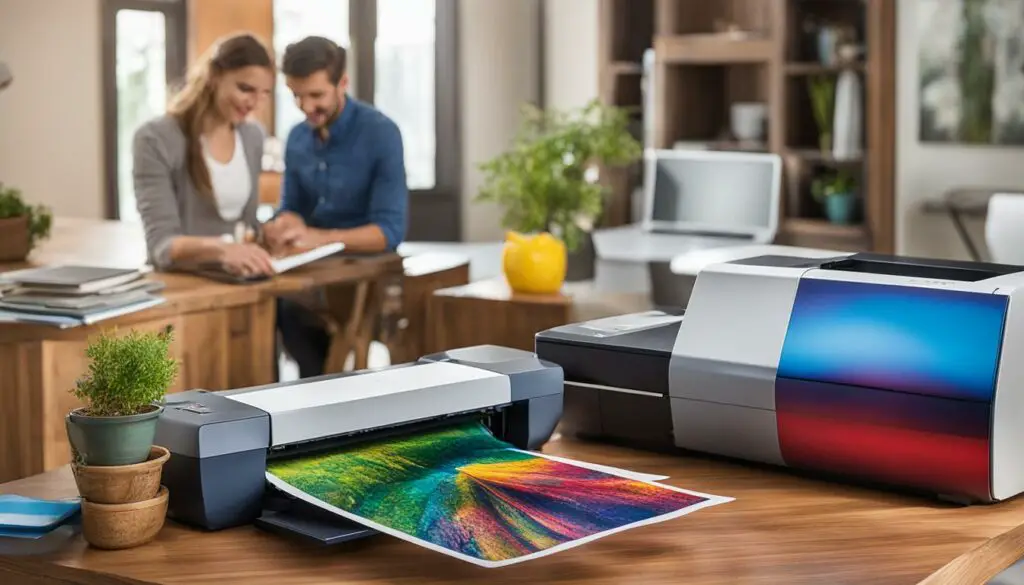
In conclusion, inkjet printers offer a combination of affordability and high-quality prints, making them a practical choice for individuals and small businesses alike. With their versatility and cost-effective options, inkjet printers excel in producing vibrant and detailed prints for a variety of printing needs.
Laser Printers: Fast and Efficient
Laser printers are highly regarded for their exceptional speed and efficiency. These printers utilize toner, a powder-based ink, to transfer the ink onto paper using heat. The laser technology employed in these printers allows for impressively fast printing speeds, reaching approximately 50 pages per minute. This makes them an ideal choice for environments that require large volumes of printed documents on a regular basis, such as offices and businesses.
One of the key advantages of laser printers is their ability to consistently and accurately produce high-quality text documents. The precision and clarity of the printed text are unmatched, making laser printers the preferred option when it comes to printing important business reports, contracts, and other professional documents. The superior text quality ensures that every word is clearly legible, without any smudging or blurring.
Laser printers are also known for their durability and longevity. These machines are designed to handle large monthly duty cycles, meaning they can efficiently print thousands of pages before requiring toner replacement. This longevity, combined with the lower cost per page compared to other printing technologies, makes laser printers a cost-effective choice in the long run.
| Advantages of Laser Printers |
|---|
| Fast printing speeds |
| High-quality text documents |
| Durable and long-lasting |
| Lower cost per page |
While laser printers excel in text printing, they may not be the ideal choice for printing photos or images. Inkjet printers offer superior image quality and color accuracy, making them a better option for artistic professionals and individuals who require vibrant, visually stunning prints. However, for those primarily focused on fast and efficient text printing with exceptional quality, laser printers are the go-to choice.
Key Advantages of Laser Printers:
- Fast printing speeds
- High-quality text documents
- Durable and long-lasting
- Lower cost per page
LED Printers: Compact and Energy Efficient
LED printers offer several advantages that make them a top choice for those seeking a compact and energy-efficient printing solution. These printers use a stationary array of LEDs to create an entire line of dots on the drum, resulting in simplified mechanical parts and quiet operation. Their solid-state light source not only contributes to their reliability but also makes them consume less power compared to laser printers. LED printers are generally lighter and more compact, making them well-suited for home users and small businesses that prioritize space-saving features.
One of the key advantages of LED printers is their energy efficiency. With fewer mechanical parts and a solid-state light source, LED printers consume less power during operation. This not only helps in reducing energy costs but also makes them more environmentally friendly. LED printers are an excellent choice for users who are conscious of their carbon footprint and want to minimize their energy consumption without compromising on printing quality.
In addition to being compact and energy efficient, LED printers offer high-quality prints. They are capable of producing sharp and vibrant images with precise details. LED technology allows for accurate dot placement, resulting in crisp text and graphics. Whether you need to print documents, presentations, or high-resolution photos, LED printers deliver excellent results.
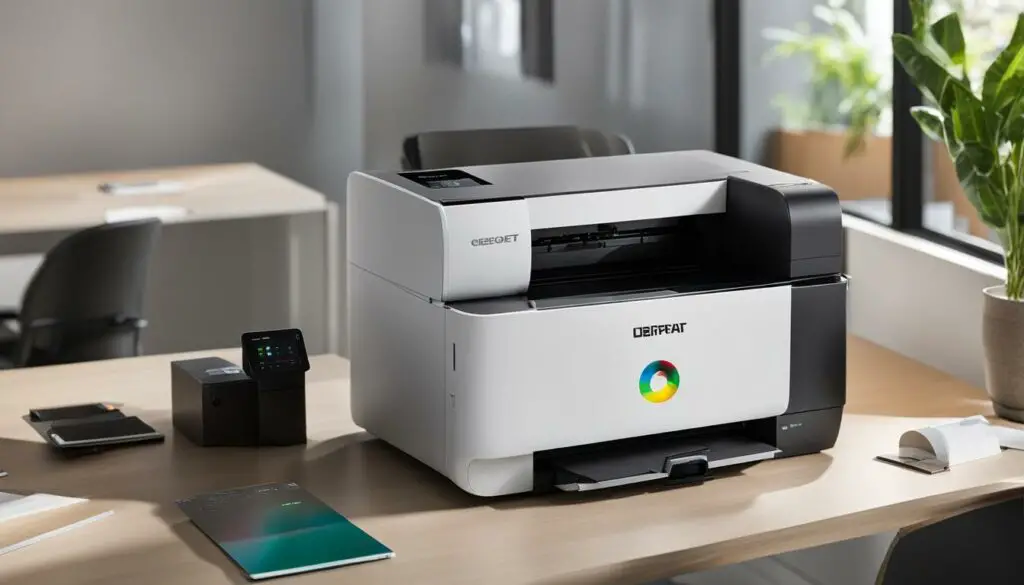
Advantages of LED Printers
- Compact size and lightweight design
- Energy efficient, consuming less power
- Quiet operation
- High-quality prints with sharp details
- Reliable performance
Comparison: LED Printers vs Laser Printers
| Features | LED Printers | Laser Printers |
|---|---|---|
| Size | Compact and lightweight | Generally bulkier and heavier |
| Energy Efficiency | Consumes less power | Consumes more power |
| Noise Level | Quiet operation | Can be noisy |
| Print Quality | Produces high-quality prints | Offers higher resolution |
| Printing Speed | Relatively fast | Typically faster |
LED Printers vs Laser Printers: Which One Should You Choose?
When it comes to choosing between LED printers and laser printers, it’s crucial to consider your specific printing needs and preferences. Both technologies have their unique advantages and features that cater to different printing requirements. To help you make an informed decision, let’s compare LED printers and laser printers in terms of quality, speed, cost, and versatility.
Quality
LED printers are known for their exceptional print quality, particularly when it comes to producing high-resolution images and vibrant colors. They provide sharp and detailed prints, making them an ideal choice for photographers, artists, and graphic designers. On the other hand, laser printers offer superior text quality, delivering crisp and precise documents, making them suitable for text-heavy printing tasks in office environments.
Speed
When it comes to printing speed, laser printers have the upper hand. They can print pages at a much faster rate compared to LED printers, making them more efficient for high-volume printing. Laser printers are preferred for busy work settings where time is of the essence, such as offices and businesses that require quick and consistent printing.
Cost
The cost factor is an important consideration for many users. LED printers are generally more affordable upfront compared to laser printers. They are a cost-effective option for individuals and small businesses with lower printing needs. Additionally, LED printers tend to have lower maintenance costs due to their simplified mechanical parts. On the other hand, laser printers are initially more expensive, but their lower per-page costs make them a more economical choice for high-volume printing in the long run.
Versatility
When it comes to versatility, LED printers are highly flexible. They can easily handle a wide range of print media, including different paper sizes, weights, and textures. LED printers can also print on various specialty media such as glossy or matte papers. Laser printers, while not as versatile as LED printers, excel in printing black and white documents, making them a reliable choice for text-intensive printing tasks.
Ultimately, the decision between LED printers and laser printers depends on your specific printing requirements. If you prioritize exceptional print quality for images and graphics, LED printers would be the better choice. However, if speed, precise text printing, and long-term cost efficiency are more important to you, laser printers are the way to go. Analyze your needs, consider the advantages of each technology, and select the printer that best aligns with your printing priorities.
Conclusion
Both LED printers and laser printers have their own unique advantages and considerations. LED printers are compact, energy efficient, and capable of producing high-quality prints, making them an excellent choice for those looking for affordability and versatility. On the other hand, laser printers offer superior resolution and faster printing speeds, making them ideal for professionals who prioritize accuracy and efficiency.
To decide between LED printers and laser printers, it’s important to evaluate your specific printing requirements. If you value affordability, compactness, and the ability to produce high-quality prints and photos, LED printers are a great option. However, if you need precise and fast text printing with superior resolution, laser printers are the way to go.
Consider your priorities, compare the advantages of each technology, and make an informed decision based on your needs. Whether you choose LED printers or laser printers, you can be confident in finding a reliable and efficient printing solution for your home or office.
FAQ
What is the difference between LED printers and laser printers?
LED printers use a stationary array of LEDs to create an entire line of dots across the drum, while laser printers use a laser beam.
Which printer technology is more affordable?
LED printers are generally more affordable compared to laser printers.
Which printer technology offers higher resolution and image quality?
Laser printers offer higher resolution and image quality, making them the preferred choice for artists and photographers.
Are LED printers more reliable than laser printers?
LED printers have the potential to be more reliable due to their simplified mechanical parts and solid-state light source.
Which printer technology is ideal for home users and low-volume printing?
Inkjet printers, specifically cartridge-free inkjet printers, are generally more suitable for home users and low-volume printing.
Are laser printers faster than LED printers?
Laser printers are generally faster than LED printers, with printing speeds of around 50 pages per minute.
Which printer technology is more suitable for office environments?
Laser printers are commonly used in office environments due to their fast printing speeds, efficiency in handling text documents, and high-quality text output.
Are LED printers more compact and energy efficient?
Yes, LED printers are generally more compact and energy efficient compared to laser printers.
Can LED printers produce high-quality prints and photos?
LED printers excel in producing high-quality prints and photos on various paper types.
How do laser printers transfer ink onto paper?
Laser printers use toner, a powder, to transfer ink onto paper using heat.
Which printer technology should I choose?
The choice between LED printers and laser printers depends on your specific printing needs, budget, and preferences. Consider factors such as affordability, print quality, printing speed, and energy efficiency when making a decision.

